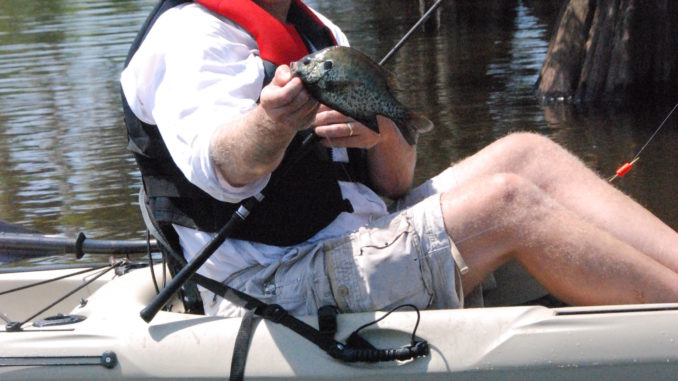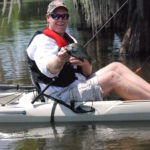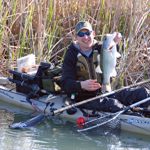
Kayaks, canoes can expand a pond’s potential
Spring has sprung, which for paddling anglers will means more powerboats of all varieties to contend with.
Those anglers who dream of a place where perennial spring fishing lasts all year need look no further than your local farm pond. For the sake of discussion, a farm pond includes a wide variety of water bodies 15 to 20 acres or less and typically not available to public access.
Gaining access is the key to fishing a good pond, unless it’s property you own. That means you’re going to have to get permission to fish. In days gone by, it was a rite of passage to fish farm ponds, and no one considered the need for permission, mostly because in those days, people treated the property of others with respect. Those days are gone now, replaced by “No Trespassing” signs and even fences and gates.
Access to private ponds is similar to private hunting land; there are two ways to gain access: pay for its use or ask permission. The route you choose is up to you.
Fish in small ponds don’t behave the same as their large-reservoir relatives due to the small size of the community.
“We’ve found that because our bass can only travel so far, they behave a lot different than if they were in a big body of water,” said Mike Johnson of The Clinton House, who manages several private bass ponds on the plantation.
While most anglers walk around the edge of a small pond and cast, better access to fish can be gained by using a kayak or canoe.
“The smallest piece of cover — a single stump, tree limb or even a bush hanging over the water — is a big deal to a pond bass because they don’t have the same amount of room here,” Johnson said. “Our fish use the shoreline a lot more than a big-lake fish would.”
Being quiet is important anywhere you fish, but especially in a small pond. Your best chance to catch that big bass off a small piece of cover is to make a long, accurate cast that lands in the edge of the grass and then slides into the water.
“Soft plastics are probably your best bets, something with very little weight hooked weedless,” Johnson said. “Even a big bass will spook if something slaps the water right over his head. I like to land my cast on the bank and just slide it in. Being weedless helps you pull the bait off the bank, over cover and through shallow weeds where big bass like to hide.”
Try to match the size of your bait to the time of day. Smaller baits are better under bright, sunny conditions, when fish can see better. At daylight and dark — and even at night — bigger baits, even up to 10 inches, can catch a trophy bass.
The benefits of using a kayak for bream fishing in a farm pond is not only better access, but as a scouting tool as well. Bream — primarily bluegills and shellcrackers — will stick close to their bedding areas through the summer. A depth finder may prove useful, but a slow paddle around the perimeter of a farm pond will tell you just about everything you need to know if you pay attention.
Look for areas with hard or sandy bottoms where bream will bed. Bottoms of mud or silt are rarely used for bedding. Muddy swirls or indentions in the bottom will give away bedding locations. Those areas may also have a distinct odor of fish once the spawning starts, but that may still be a couple weeks away in the Carolinas.
It’s hard to pick something bream won’t eat once an active bed is located in a farm pond. Popping bugs, Beetle Spins, small jigs or live bait are all effective. An old trick learned years ago from an old-time pond fisherman was to comb the surrounding pastures near a farm pond and collect grasshoppers for bait. The biggest bream will cross an entire colony of beds to attack a hopper.
Fewer farm ponds hold crappie. Either white or black crappie present a small-water management nightmare if not properly controlled. Crappie are prolific breeders, grow relatively quickly and can overrun a pond, causing all species to suffer if their numbers are not kept in check.
Good populations of bass and bream often tend dominate the shoreline real estate on a small pond, especially during the spawning seasons. Look for crappie to hold around mid-depth structure. Again, this gives the paddling angler a distinct advantage over a bank-bound angler; being mobile allows a kayaker to work visible structure with a jig pole rather than casting out a minnow under a bobber and waiting for crappie to find it.
A sculling paddle in one hand and a jig pole in the other, vertically presenting a 1/16-ounce jig around structure, can produce a limit of crappie in short order from a small body of water.






Be the first to comment